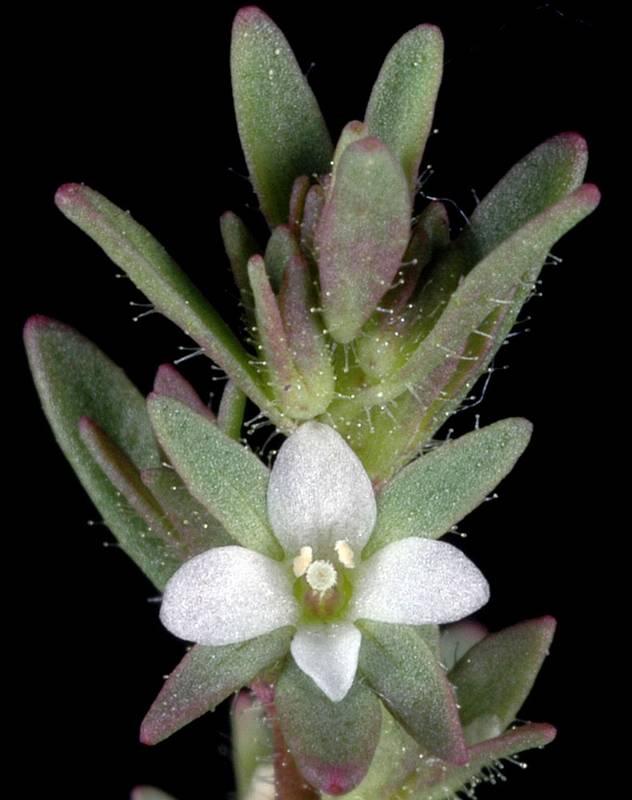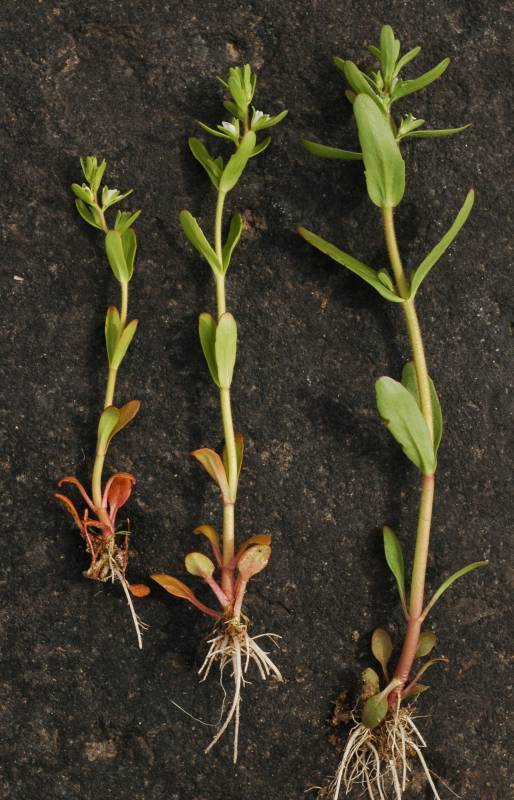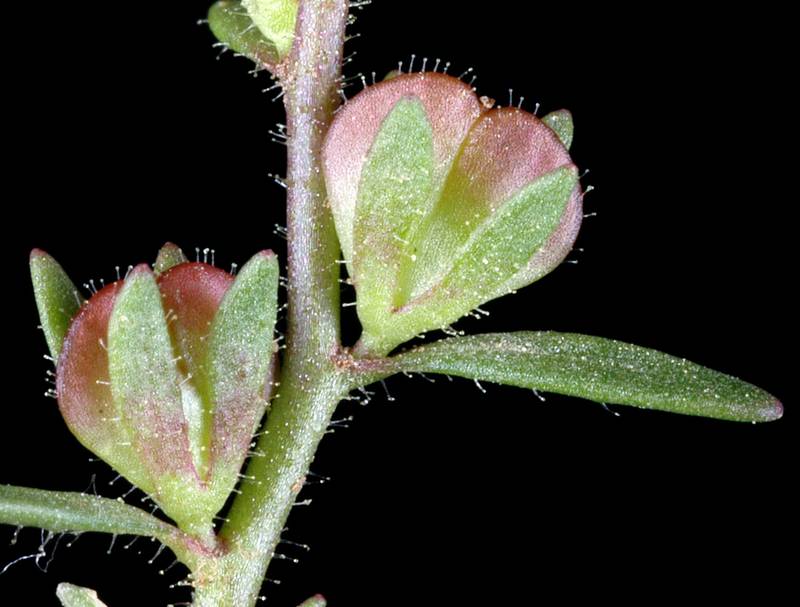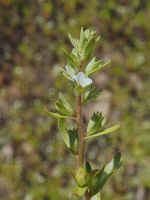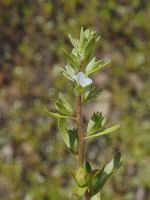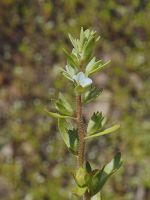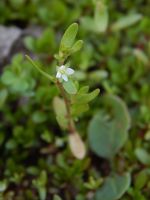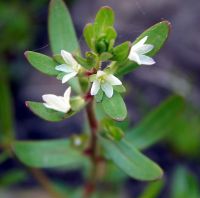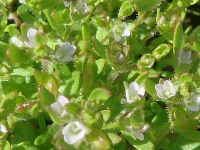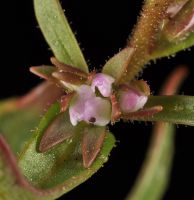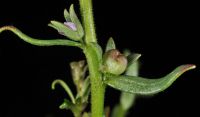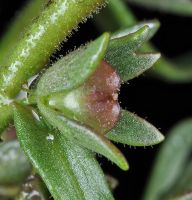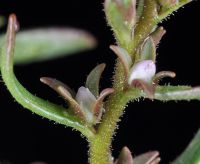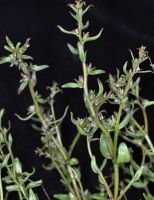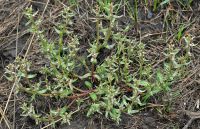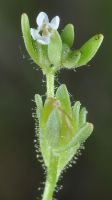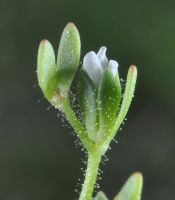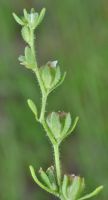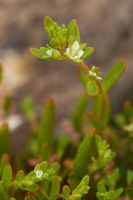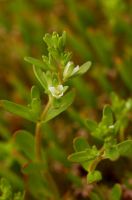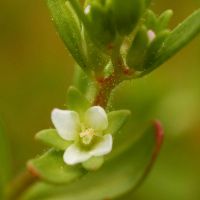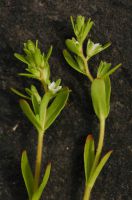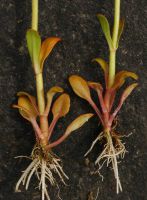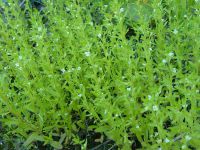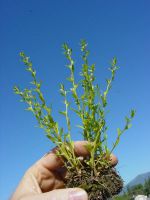Distribution: Occurring on both sides of the Cascades crest in Washington; Alaska to California, east across North America to the Atlantic Coast.
Habitat: Swales, wet meadows, stream banks, and other moist places, from the lowlands to moderate elevations in the mountains.
Flowers: April-September
Origin: Both native (var. xalapensis) and introduced (var. peregrina) varieties
Growth Duration: Annual
Conservation Status: Not of concern
Pollination: Bees, flies
Fibrous-rooted annual, the stems erect, 0.5-3 dm. tall, simple or branched below.
Principal leaves opposite, linear-oblong to oblanceolate, 0.5-3 cm. long and 1-9 mm. wide, irregularly toothed or entire.
Inflorescence terminal, elongate, lax; bracts alternate, similar to the leaves, gradually reduced upward, each subtending a single, sub-sessile flower; sepals 4; corolla white, inconspicuous, 2 mm. wide; style very short; stamens 2.
Capsule 3-4 mm. high, obcordate.
Publication: Sp. Pl. 1: 14. 1753.
- var. peregrina – purslane speedwell Occurring west of the Cascades crest in Washington; Alaska to Oregon, also Great Plains to the Atlantic Coast.
-
var. xalapensis – purslane speedwell
 Occurring on both sides of the Cascades crest in Washington; occurring throughout much of North America.
Occurring on both sides of the Cascades crest in Washington; occurring throughout much of North America.
PNW Herbaria: Specimen records of Veronica peregrina in the Consortium of Pacific Northwest Herbaria database
WA Flora Checklist: Veronica peregrina checklist entry
OregonFlora: Veronica peregrina information
E-Flora BC: Veronica peregrina atlas page
CalPhotos: Veronica peregrina photos

